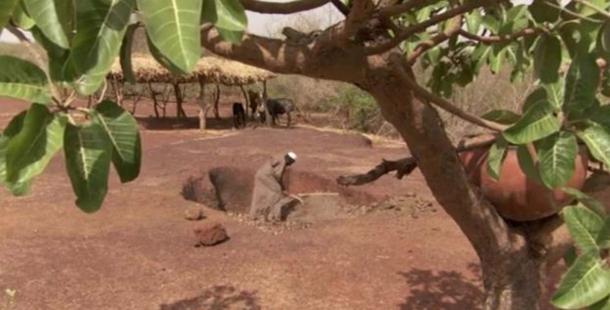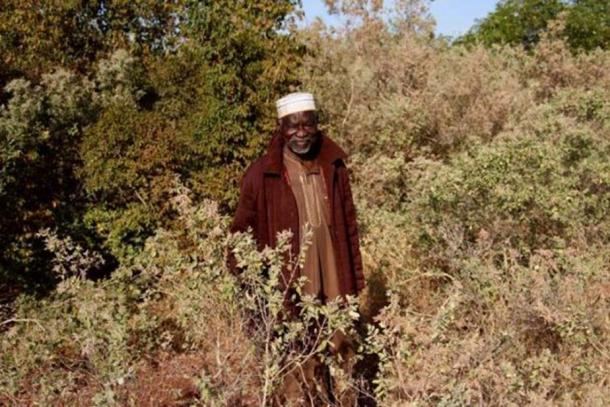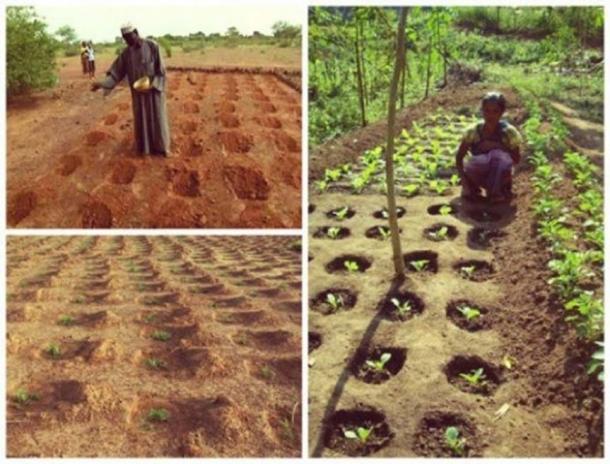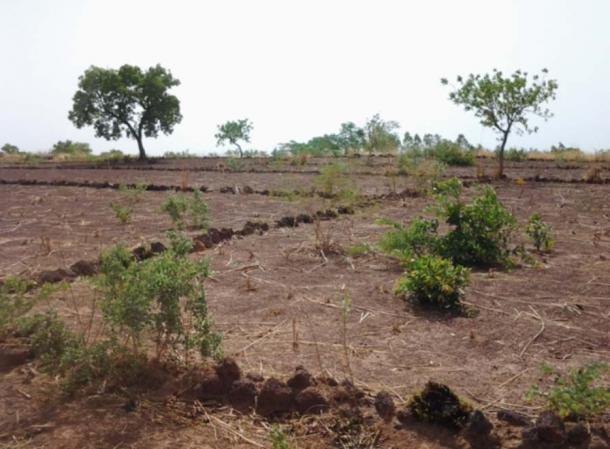Desertification is a serious problem facing numerous countries in the world today. Various measures have been taken to counter the negative effects, with some providing better results than others. A farmer in Burkina Faso looked to his ancestors and came up with an innovative solution.
Desertification has been defined as a “process of land degradation in arid, semi-arid and sub-humid areas due to various factors including climatic variations and human activities.” ‘Modern’ innovations as well as traditional practices have been taken trying to stop the negative impact of desertification. The successful application of the latter is apparent in the case of Yacouba Sawadogo, a farmer who took the initiative to combat desertification in his country by using simple, traditional methods.

Screenshot from ‘The Man Who Stopped the Desert’ trailer. Source: 1080 Film & TV/ Vimeo
Taking Matters into His Own Hands
Yacouba Sawadogo is a farmer from Burkina Faso. The northern area of this African country lies within the Sahel, a semi-arid region sandwiched by the Sahara Desert in the north and the Sudanian Savanna in the south. Desertification has been a serious problem in the northern part of Burkina Faso since the 1970s.
As a result of over-farming, over-grazing, and over-population, the soil in this region has suffered from heavy erosion and drying over the decades. Efforts have been made both on a national and international scale to remedy the situation, though to no avail.

Yacouba Sawadogo. ( Mr Mondialisation )
It was during the 1980s that Sawadogo, seeing that the measures taken by the authorities were not producing results, decided to take matters into his own hands. Sawadogo employed two traditional methods – Zaï and cordons pierreux, in his battle against the desertification of his country. As these traditional ways were regarded as odd by his community, Sawadogo was initially thought to have lost his mind, and was ridiculed.
Two Farming Techniques
Zaï is a farming technique which has been used traditionally in the western part of the Sahel, which includes Burkina Faso. In essence, this technique involves the digging of holes in soil that is not very permeable, so that runoff can be collected. These holes have a depth that range from 5 to 15 cm (1.97-5.91 inches), and a diameter of between 15 and 50 cm (5.91-19.69 inches). Fertilizers or compost may be placed in the holes to increase the amount of nutrients in the soil. Crops may then be planted in these holes.
The advantages of this technique are many. For instance, this is a simple and cheap technique that may be utilized by any farmer. It is, however, a labor-intensive technique, and therefore, the cost is higher in terms of manpower. In addition, farmers need to monitor and maintain their Zaï holes. Nevertheless, the efficacy of Zaï is evident, as its use has resulted in increased crop yield.

Zaï farming technique. ( Mr Mondialisation )
Another traditional technique employed by Sawadogo is known as cordons pierreux. Like Zaï, this technique is aimed at using runoff to combat desertification. Whilst the Zaï holes collect runoff, the cordons pierreux prevent the runoff from going to waste by slowing its flow. This technique uses small blocks of rubble or stones that are arranged in a thin line across the field, which slows down the flow of runoff, thus allowing more time for the water to penetrate the earth.

Example of the cordons pierreux farming technique. ( CC BY SA 4.0 )
Success!
The success gained by Sawadogo in his fight against desertification has made him a respected figure in the community that initially ridiculed him. In 2010, a documentary film entitled The Man Who Stopped the Desert, which is about Sawadogo’s life, premiered in Norwich in the UK. This film made his work known on the international stage and highlighted the problems faced, as well as potential steps that may be taken, by countries such as Burkina Faso to mitigate them.
The fame achieved by Sawadogo through the film has enabled him to reach out to a much greater audience and allowed him to also share his agricultural techniques with fellow farmers, making them better equipped with more effective tools in their struggle against desertification.
Top image: Yacouba Sawadogo planting. Source: Mr Mondialisation
By Wu Mingren
Updated on November 19, 2021.
 RSS Feed
RSS Feed















 November 20th, 2021
November 20th, 2021  Awake Goy
Awake Goy  Posted in
Posted in  Tags:
Tags: 













